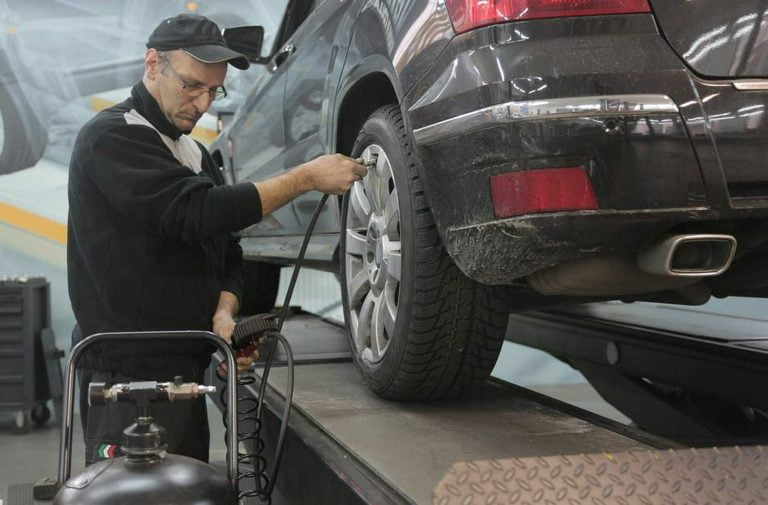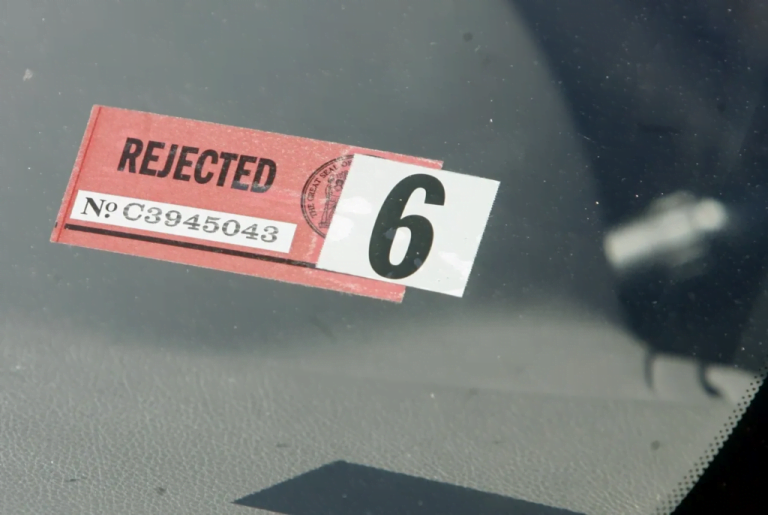Car Creaky Noise When Driving: Causes, Diagnosis, Solutions
What’s that creaky noise coming from your car when you hit a bump or turn a corner?
Don’t ignore it!
This article will delve into the common causes of that mysterious sound in your car’s suspension system.
Stay ahead of potential safety hazards by understanding the importance of addressing these issues promptly.
car creaky noise when driving
If your car is making a creaky noise when driving, it could be due to various issues in the suspension system.
Lack of lubrication, worn-out rubber bushings, faulty ball joints, broken coil springs, and steering wheel problems are common culprits.
It is crucial to address these problems promptly to avoid safety risks and potential accidents.
Have the suspension system inspected by a professional mechanic to determine the exact cause of the creaking noise.
The repair costs for creaking suspension can vary depending on the specific part that needs fixing, such as shock absorbers which can cost between 拢150 and 拢700.
Signs of suspension damage include knocking sounds over bumps, clanking metal noises, creaking under the car, and a rougher ride than usual.
If left unchecked, suspension failure can lead to strain on other components, potential vehicle collapse, and even MOT failure.
Be vigilant for warning signs like difficulty controlling the car and drifting or pulling when turning corners, and act promptly to ensure safety on the road.
Key Points:
- Car creaky noise can be due to issues in the suspension system such as lack of lubrication, worn-out rubber bushings, faulty ball joints, broken coil springs, and steering wheel problems.
- Promptly addressing these issues is crucial to avoid safety risks and potential accidents.
- Have the suspension system inspected by a professional mechanic to pinpoint the exact cause of the creaking noise.
- Repair costs for creaking suspension can vary depending on the specific part that needs fixing, like shock absorbers which can cost between 拢150 and 拢700.
- Signs of suspension damage include knocking sounds over bumps, clanking metal noises, creaking under the car, and a rougher ride than usual.
- Failure to address suspension issues promptly can lead to strain on other components, potential vehicle collapse, and even MOT failure.
Check this out:
💡 Did You Know?
1. The creaking noise often heard when driving a car can sometimes be attributed to the suspension system, particularly the sway bar bushings.
2. Old or worn out belt tensioners in a car’s engine can also cause a creaking noise, especially during acceleration or deceleration.
3. Loose or damaged heat shields around the exhaust system can create a creaking sound when the car is in motion, due to the metal expanding and contracting with heat changes.
4. In some cases, a creaking noise in a car can indicate a problem with the steering column or power steering system, potentially requiring immediate attention to avoid safety issues.
5. Humidity and moisture can sometimes lead to the development of rust on various metal components of a car, which can result in creaking noises when the vehicle is on the move.
Reasons For Creaking Noise In Car Suspension
- When a creaking noise emanates from a car’s suspension system, several potential culprits may be at play.
- One common reason is the lack of lubrication in the joints and components of the suspension. Over time, the parts can become dry and worn, leading to friction and the characteristic creaking sound while driving.
- Additionally, worn-out rubber bushings can contribute to the noise as they lose their ability to cushion and absorb shocks adequately.
- Faulty ball joints, responsible for connecting the suspension to the wheels, can also cause creaking noises when they wear out.
- Broken coil springs, critical components in the suspension system, can lead to a creaking sound as well.
- Steering wheel issues, such as worn-out components or misalignment, can also manifest as creaking noises, indicating potential problems in the suspension system.
Addressing these potential issues promptly is crucial to maintain the safety and performance of the vehicle. Ignoring creaking sounds in the suspension can lead to further damage and pose safety risks on the road. Therefore, it is recommended to have the suspension system inspected by a professional mechanic if creaking noises are noticed while driving. Identifying and resolving the root cause of the creaking noise promptly can prevent accidents and costly repairs down the line, ensuring the vehicle remains in optimal condition for safe driving.
Importance Of Promptly Addressing Suspension Issues
- Promptly addressing suspension issues in a vehicle is paramount** to ensure the safety of both the driver and passengers on the road.
- Ignoring creaking noises or other signs of suspension problems can lead to further damage to the components, potentially compromising the integrity of the entire suspension system.
- This can result in unsafe driving conditions, reduced vehicle control, and an increased risk of accidents.
- Addressing suspension problems promptly not only mitigates safety risks but also prevents additional wear and tear on other vehicle components that may be affected by a malfunctioning suspension.
- By promptly identifying and repairing suspension issues, drivers can maintain the optimal performance and longevity of their vehicles, avoiding costly repairs and ensuring a smooth and safe driving experience.
Cost Of Creaking Suspension Repairs
The cost of creaking suspension repairs can vary depending on the specific part requiring attention and the extent of the damage.
- For example, replacing shock absorbers, which are crucial components of the suspension system responsible for absorbing shocks from the road, can cost between 拢150 and 拢700 per shock absorber, including parts and labor.
- On the other hand, ball joint replacement, a common repair for creaking suspension noises, may involve relatively inexpensive parts but varying labor costs depending on the complexity of the job.
It is essential to consult with a professional mechanic to receive an accurate quote for the necessary repairs.
Addressing creaking suspension issues promptly can help prevent further damage and potentially reduce repair costs in the long run, underscoring the importance of timely maintenance and inspections to ensure vehicle safety and performance.
- Consult with a professional mechanic for accurate quotes
- Promptly address creaking suspension issues to prevent further damage
- Regular maintenance and inspections are crucial for vehicle safety and performance
Signs Of Suspension Damage To Look Out For
- Recognizing the signs of suspension damage is crucial in maintaining the safety and performance of a vehicle.
- Common indicators of suspension issues include:
- knocking sounds when driving over bumps,
- clanking metal noises while driving,
- creaking sounds originating from under the car, and
- a noticeably bumpier ride than usual.
- These signs may signal problems with various components of the suspension system, such as worn-out bushings, faulty ball joints, or broken coil springs.
- It is important for drivers to pay attention to these signs and address them promptly to prevent further damage and ensure a safe driving experience.
- By recognizing the signs of suspension damage early on, drivers can avoid potential safety risks on the road and prevent more severe issues that may arise from neglected suspension problems.
Effects Of Suspension Failure On Vehicle Safety
Suspension failure in a vehicle can have significant implications for overall safety and performance. When the suspension system is compromised, it can lead to an array of issues that affect vehicle control, handling, and stability. Suspension failure may result in increased strain on other components of the vehicle, potentially causing premature wear and compromising the integrity of the entire vehicle. A failing suspension system can lead to unsafe driving conditions, including difficulty controlling the car, drifting or pulling when turning corners, and an overall unpredictable driving experience. Neglecting suspension issues can ultimately result in vehicle collapse, increased risk of accidents, and potential MOT failure.
To maintain the safety and reliability of a vehicle, it is essential to address suspension problems promptly and ensure that the suspension system is in optimal working condition.
- Ensure suspension system is in optimal working condition
- Promptly address suspension problems
Tips For Diagnosing Suspension Faults
- Diagnosing suspension faults in a vehicle requires attentiveness to specific signs and symptoms that may indicate potential issues with the suspension system. When driving, listen for any unusual sounds, such as creaking, knocking, or clanking noises, that may signal problems with the suspension components. Take note of specific driving conditions where these sounds occur, as it can help pinpoint the source of the issue. After driving, park the car on a flat surface and check for any visible signs of sagging in the suspension. Pay attention to how the vehicle responds when driving over bumps or uneven terrain, as a bumpy ride may indicate suspension issues. By being vigilant and observant of these signs, drivers can identify potential suspension faults early on and take the necessary steps to address them promptly, ensuring the safety and performance of the vehicle.
Identifying Suspension Issues: Bouncing Test
- One effective way to identify suspension issues in a vehicle is to perform a bouncing test on each corner of the car.
- To conduct this test, push down on each corner of the car and observe how the suspension responds.
- A healthy suspension system should compress and rebound smoothly, returning the corner to its natural position without excessive bouncing.
- If a corner does not return to its original position promptly or exhibits abnormal bouncing, it may indicate a problem with the suspension components in that area.
- This simple test can help drivers quickly identify potential suspension issues and take the necessary steps to address them before they escalate.
- By incorporating the bouncing test into regular vehicle inspections, drivers can proactively monitor the condition of their suspension system and maintain optimal vehicle performance.
Warning Signs Of Suspension System Failure
Recognizing the warning signs of suspension system failure is crucial in ensuring the safety and reliability of a vehicle. If drivers notice difficulty controlling the car, particularly when turning corners or navigating rough terrain, it may indicate underlying suspension problems. Other warning signs of suspension system failure include:
- Drifting or pulling to one side while driving
- A bumpy or uncomfortable ride
- Unusual noises such as creaking, knocking, or clanking sounds
These signs should not be ignored, as they may signal potentially dangerous conditions that can compromise vehicle safety. If any of these warning signs are present, it is essential to have the suspension system inspected by a qualified mechanic promptly.
Addressing suspension system failures early on can prevent accidents, costly repairs, and ensure the longevity and performance of the vehicle on the road.
FAQ
Why is my car creaking when I drive?
If you’re hearing a creaking noise while driving, it may indicate worn-out suspension bushes, especially if the sound is more noticeable when going over speed bumps. Additionally, if your car is suddenly giving you a bumpier ride, the issue could possibly lie within the shock absorbers, possibly due to leaking fluids. It’s essential to have these components inspected by a professional to ensure safe and smooth driving experiences.
Why does the front end of my car creak?
If you’re experiencing a creaking sound from the front of your car while driving over bumps or uneven surfaces, it is likely due to wear and tear on the strut mounts or bearings. These components can deteriorate over time, causing them to creak as the vehicle’s suspension is put under stress. While control arm bushings and sway bar bushings are not typically the source of creaking noises, subframe bushings could also be a potential culprit.
The creaking noise you’re hearing is most likely a result of the aging strut mounts or bearings in your front suspension system. As these parts wear out, they may start to produce noise when the vehicle’s weight shifts over uneven terrain. While other rubber components in the front suspension, like control arm and sway bar bushings, are less likely to cause creaking sounds, it’s crucial to inspect the subframe bushings as well to identify the source of the issue.
What causes suspension to creak?
As time passes, the wear and tear on the rubber bushings in your suspension system can cause them to deteriorate, creating spaces where metal components may start rubbing against each other. This friction between parts due to degraded bushings can result in the suspension emitting creaking noises, particularly noticeable when traversing uneven terrains. As the rubber loses its elasticity and structure, the once smooth movements become compromised, leading to the distinct sound of creaking.
Furthermore, the impact of environmental factors like heat, moisture, and the overall stress placed on the suspension components can expedite the breakdown of the rubber bushings. The combination of these elements gradually weakens the integrity of the bushings, making them more prone to cracking and breaking. Consequently, the resulting gaps and lack of proper cushioning cause the suspension to creak as it struggles to maintain stability and absorb impacts during driving.
Why is my car making loud squeaky noise when driving?
The loud squeaky noise your car is making when driving could be a result of various issues, from worn-out serpentine belts or brake pads to more serious problems with the suspension or power steering systems. Identifying the specific source of the noise will be crucial in determining the exact cause and necessary repairs to resolve the issue. Regular maintenance and inspections can help prevent these issues from escalating into major problems that may affect the overall driving performance of your vehicle.




